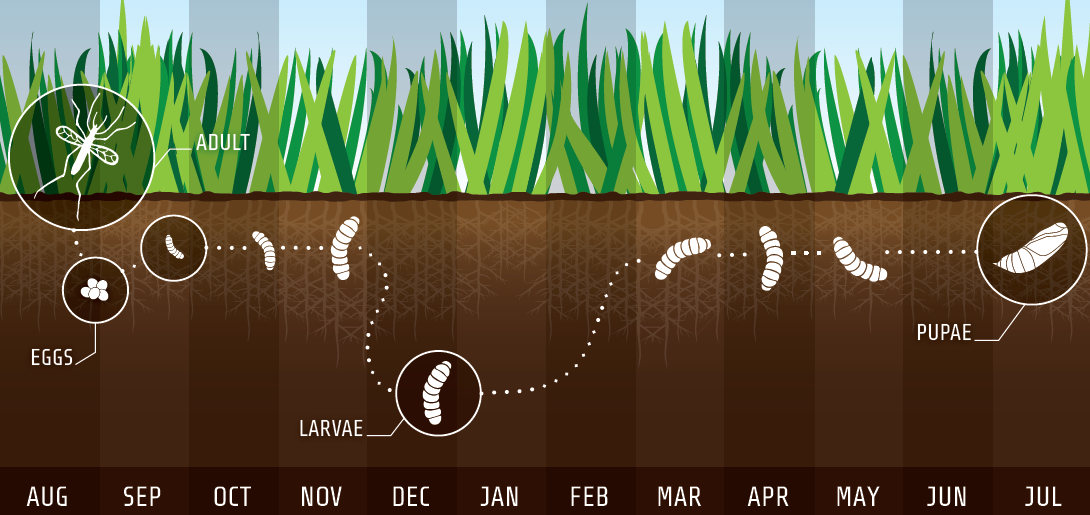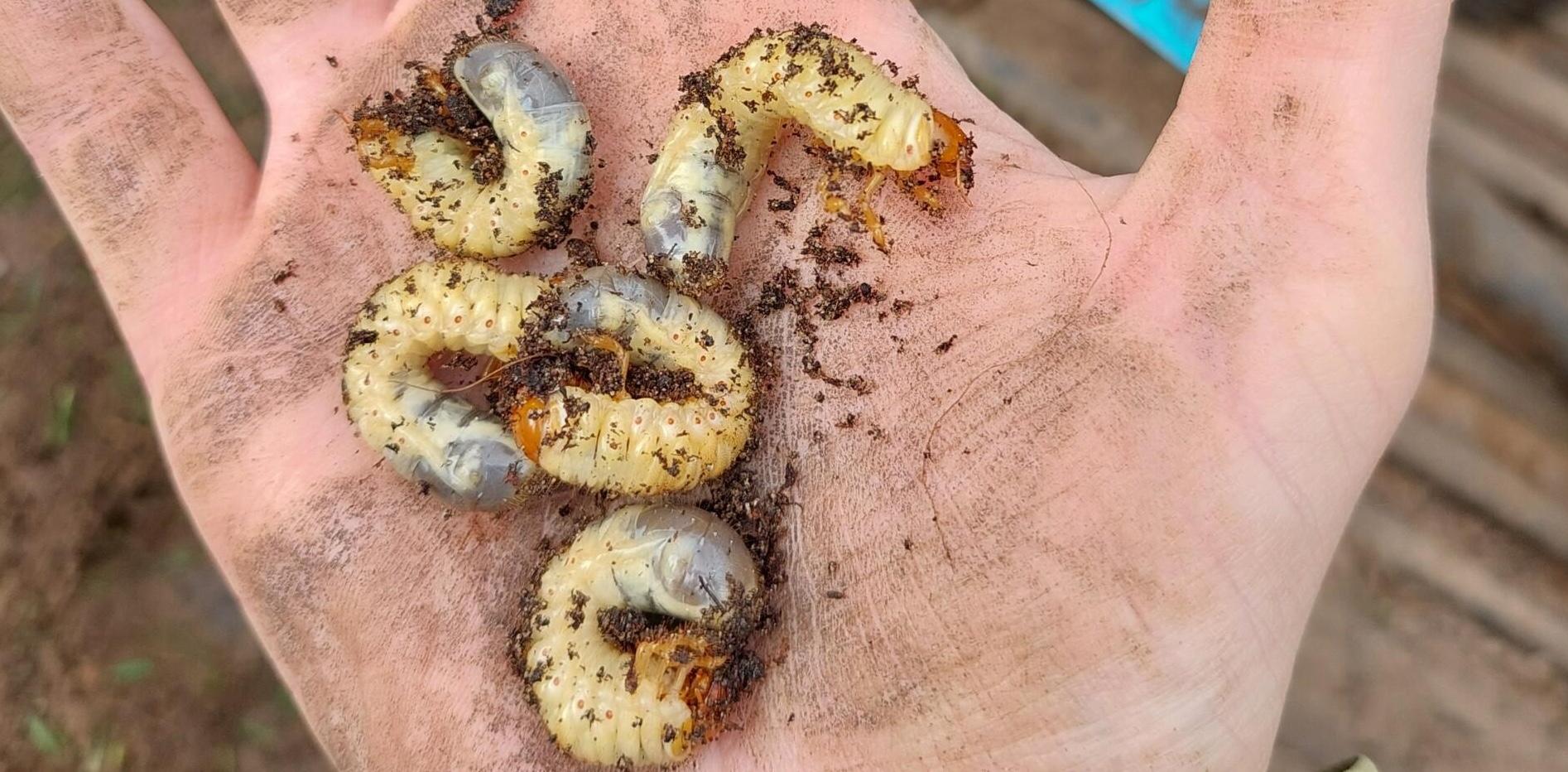 We are reaching that time of the year when the Cranefly will be on the wing again and as one lifecycle ends another begins.
Most of you will be familiar with the Cranefly; the leatherjacket; the damage it can cause - and its appeal to foraging birds and badgers that can ruin surfaces.
The leatherJacket cycle has been a feature of greenkeeper education for many years, but with a new insecticide with a very unique chemistry available on Emergency Authorisation (EA), it's really worth a recap to ensure timings of application are correct.
We are reaching that time of the year when the Cranefly will be on the wing again and as one lifecycle ends another begins.
Most of you will be familiar with the Cranefly; the leatherjacket; the damage it can cause - and its appeal to foraging birds and badgers that can ruin surfaces.
The leatherJacket cycle has been a feature of greenkeeper education for many years, but with a new insecticide with a very unique chemistry available on Emergency Authorisation (EA), it's really worth a recap to ensure timings of application are correct.
 The Cranefly would normally be beginning to lay its eggs now - at the end of July and beginning of August - however the extremely dry summer may have an influencing factor of the insects development this year, so it's very important to keep an eye open for them.
With greens and tee's holding considerably more moisture than everywhere else this year, it's highly likely these will be the most attractive egg laying sites, as the adult will instinctively know these areas of higher moisture will give the young leatherjackets a better chance of survival.
The Cranefly will lay 200 - 300 eggs each which will go on and quickly develop into 1st stage instars (for further explanation about Instars). The Autumn is spent developing into 2nd Stage instars before they begin to migrate down deeper into the soil, to overwinter and transform into the 3rd instar phase.
Acelepryn's new technology is very insoluble in the soil, so it stays effective in the upper soil profile where instars are active. However, it's low use rate does mean it's only effective on stage 1 and 2 instars, so getting the product on early so it can work its way into the soil profile is key.
With the Cranefly season upon us, research has have shown best results have been archived with application at the time of egg laying, to get Acelepryn in the soil profile waiting to catch the young leatherjackets at their most vulnerable.
Top Tips:
The Cranefly would normally be beginning to lay its eggs now - at the end of July and beginning of August - however the extremely dry summer may have an influencing factor of the insects development this year, so it's very important to keep an eye open for them.
With greens and tee's holding considerably more moisture than everywhere else this year, it's highly likely these will be the most attractive egg laying sites, as the adult will instinctively know these areas of higher moisture will give the young leatherjackets a better chance of survival.
The Cranefly will lay 200 - 300 eggs each which will go on and quickly develop into 1st stage instars (for further explanation about Instars). The Autumn is spent developing into 2nd Stage instars before they begin to migrate down deeper into the soil, to overwinter and transform into the 3rd instar phase.
Acelepryn's new technology is very insoluble in the soil, so it stays effective in the upper soil profile where instars are active. However, it's low use rate does mean it's only effective on stage 1 and 2 instars, so getting the product on early so it can work its way into the soil profile is key.
With the Cranefly season upon us, research has have shown best results have been archived with application at the time of egg laying, to get Acelepryn in the soil profile waiting to catch the young leatherjackets at their most vulnerable.
Top Tips:
- If the area you applying Acelypryn is hydrophobic then Qualibra can be added to assist moving it through the profile
- If the area you are applying Acelypryn is dry and unirrigated it's worth waiting for a wetter period of weather
- Due to the slow moving nature of Acelypryn early application will always give better results
- With its new mode of action, Acelypryn will paralyse the young Leatherjackets in the soil profile - unlike old technology you will not see large numbers of dying leatherjackets on the surface
- The EA is for application at 0.6l Ha in 500-1000 l/ha (the higher the better)
- Irrigate in after application
- Ensure a 5m buffer zone to protect aquatic life



